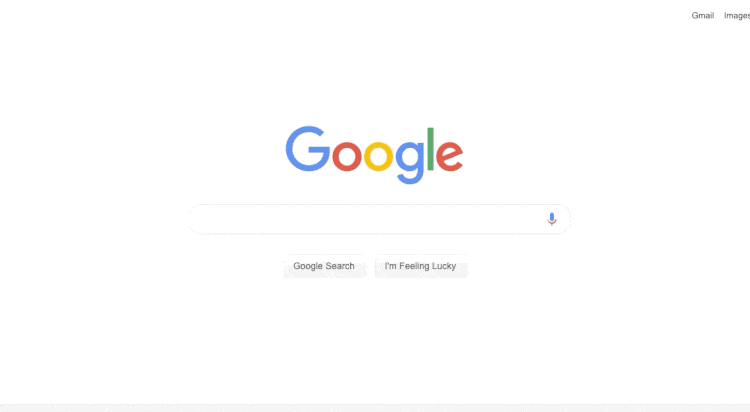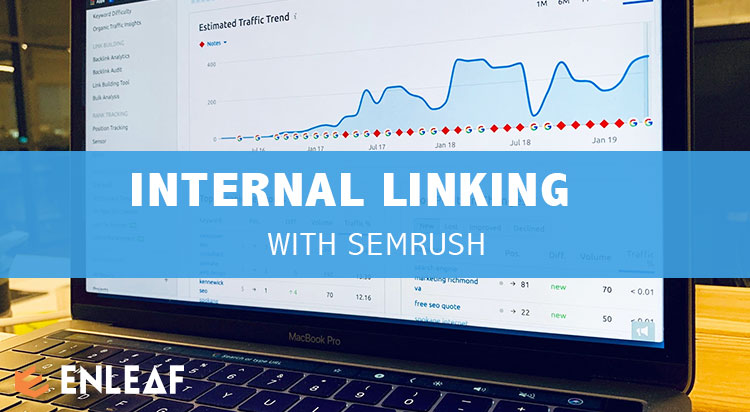A Step By Step Internal Linking Audit Process
Internal linking individual pages within your website is an important part of SEO. In this tutorial, we show you how to use SEMRush to audit and identify what pages on your site will benefit from interlinking.
While most of the focus on search engine optimization (SEO) tends to be new ways of gathering off-site backlinks, and while it is still a very important part of the SEO equation, many webmasters are missing a massive opportunity by ignoring on-site internal linking. Internal links are a major part of on-site SEO and a good internal linking strategy only continues your website’s growth in strength and authority. Internal linking is an important part of any on-site strategy.
What Is Internal Link Building?
Internal links refer to links on a website that point to other parts of the website. This can be page names in the header, or more often it refers to blog posts that will link to related blog posts elsewhere in the blog. These internal links are meant to provide value for visitors and can have some really serious SEO applications when done properly.
Each page or post of a site will have “link juice” that Google gives to it, and that juice is split up among all the links on the page. This is part of the reason new blog posts often get a boost: because they will be featured on the home page, which gets the most links from the site. Once a post falls off the home page, it tends to settle to a more natural position in Google’s search engine rankings.
This also provides a great SEO opportunity for webmasters who intentionally and carefully link their posts so low-value posts funnel their authority to the highest value posts that they want to rank higher in Google.
Why Are These Links Important?
There are several distinct purposes that internal links play on a website, and it is one of the few areas where user-friendly practices and technical Google SEO meet in the same place. Internal links should help connect related posts, help to determine which posts are most important in a website (most links vs. least), and this can help aid in the overall navigation and hierarchy of a website as Google and other search engines see it.
While internal links can be designed to act as a funnel, Google uses them as a major indication of which pages on your website are most important, and they also use that (along with an XML sitemap) to develop a guideline or “hierarchy” to your website. This helps Google assign a certain level of authority to each page. This will make a big difference when it comes to how the search engines rank those pages.

While external backlinks can be a good thing, having too many anchor rich (keyword based) backlinks from other websites can hurt a site since it’s a common form of “link spam”. On the other hand, Google straight out encourages internal links with specific anchor rich keywords since this helps Google’s bots understand the context of each page being linked to.
This will play a crucial role in the next section, as this knowledge can make a huge difference in your SEO results.
Don’t underestimate the “natural” architecture of a site that comes from interlinking similar or related posts. This helps Google’s spiders recognize what each post is about, which posts are related, and sometimes can even cause Google to more fully recognize a page it once had problems identifying. That can potentially boost the page’s rankings as a result of this added context. This natural internal architecture is something to keep in mind when doing your internal linking.
How To Do Internal Linking with SEMRush
Filtering Pages By Rankings
- Enter your target domain into the SEMRush search box.
- Select the Organic Search menu item.
- Select the Positions tab.
- In the potions dropdown set you target positions.
This filter isolates pages by ranking.
Usually what you choose here will depend on your strategy. If your objective is to boost your rankings for pages already ranking in position 1 of Google, then you would choose the #4-10 position filter.
If you are looking to boost pages in position 2 of Google to Page 1, then you might want to go with #11-20 position filter.

Identifying Target Terms
Once you have isolated your search, you want to then look for pages that have a lot of search volume and who’s traffic could benefit from a boost in rankings.
In this example we see our site ranks in position 9 for the term travel quotes, a term that receives 60,500 searches per month.
With that much search volume, even a small improvement in rankings will impact the pages click thorough rate its resulting traffic.
Identifying Internal Pages to Link From
Once we have our target keyword defined and have identified pages that rank for our targeted terms, we next need to find other relevant pages on our site that we can link out from.
To do this we can use Googles site: operator. Google site: operator allows you to see the URLs Google has in their index and when you add quotes around your keyword this further filter the results.
site: website.com “keyword”

Using our primary domain along with our target keyword, we can see all the pages throughout our website where our keyword exists.
These pages make for good candidates for a Keyword rich anchor text link back to your target page.
Boosting On-Site SEO with Internal Links
Several large SEO sites and experts have tested how keyword text, when used with internal links, makes a difference and the results were undeniable. In a strong or growing website, use of good keyword anchor text links proved to help those individual posts rank higher for the terms being targeted.
To get a full sense of the impact that internal linking can have on your website, take a look at a case study done by Ninja outreach that outlines how they raised their organic traffic by 40%

For many of us in the search space, this does not come as a surprise. Rewind 10-15 years and you hit a time when anchor rich backlinks from other websites were the single most important part in ranking a website. The reason Google punishes websites that overuse this now is that it’s still an active part of their website ranking Algorithm.
Because we are in the age of the semantic web, you don’t need to use the same keyword over and over in your internal link anchor text. Instead, use the main keyword or keyword phrase you want a page to rank for a few times, but then use a lot of variations. Take advantage of LSI and throw in some synonyms. This makes those internal links not only more natural but also broadens the semantic range your target site gets ranked for.
Conclusion
If you want to beat the competition it’s important to find out where they fall short. For many, internal linking is your ticket. Cross-linking pages within your website is a crucial part of an effort to gain more visibility online. The good news is that this is something you still have full control over, and the fact that Google sees it as so important gives you some say and control in making sure your best content ranks well in search.



